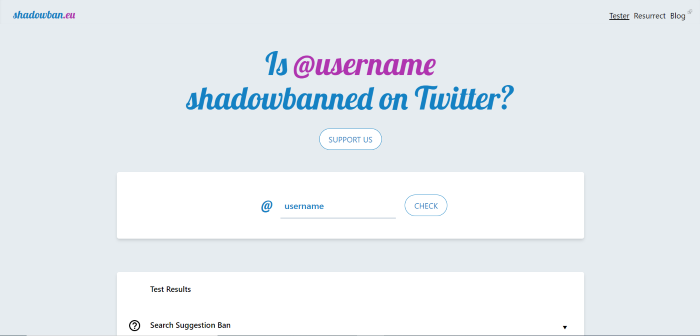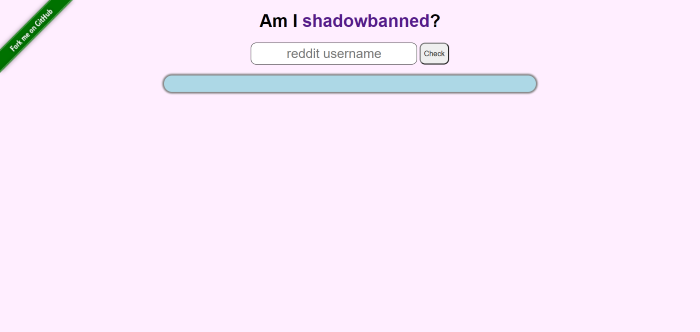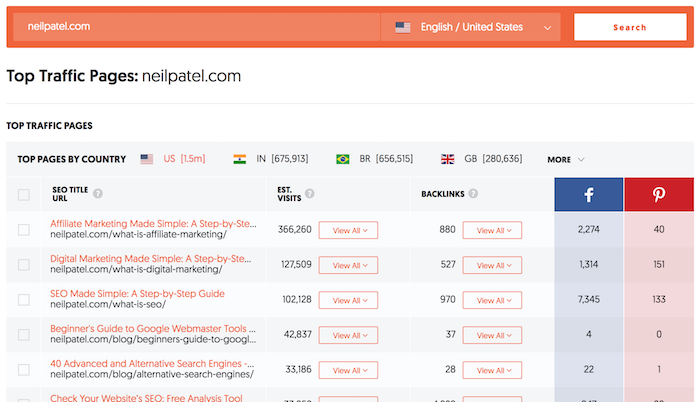
Secondary Goals: Track These GA Events If You’re Doing A/B Testing
A/B testing is brilliant. It lets you compare two or more versions of the same page element, paid ad, or another variable to see which one performs the best. In other words, it’s a key way to improve your content, increase user engagement, and boost conversion rates across your site. What’s not to like?
Additionally, with A/B testing, the results are clear and speak for themselves. For example, if you test two versions of a newsletter, it’ll be obvious from the results which version “worked” best based on the numbers.
How do you know why either version A or B performed best, though, and how do you gain deeper insight into your campaign performance?
This is where secondary goals can help you out. Let me show you why secondary goals matter in A/B testing, and how you can use them in your own marketing development.
Primary Vs. Secondary Goals in A/B Testing
Before we get started, let’s be clear on what’s meant by “primary” and “secondary” goals in A/B testing.
A primary goal is, quite simply, your main objective. It’s the priority goal of your campaign or the goal you’re hoping to achieve when you run an A/B test.
For example, say you’re a personal trainer. You have a notice on your landing page, encouraging people to sign up for a free sample week or taster session. Maybe it looks something like this from My Soul Sanctuary:

Your primary goal might be identifying how many people click through to complete this form because you’re trying to increase your sign-up numbers.
Secondary goals, on the other hand, give you more insight into user behavior and how people interact with your website. They help you reach your primary goal by providing a detailed insight into your A/B test results.
For example, the personal trainer might also want to know how many people share their content on social media, or sign up for their newsletter while on their website:

Knowing the answers to these questions offers additional insight into how well the content is performing—rather than tracking submission form sign-ups alone.
If you want to increase conversions, grow your business, and improve your ROI, you need to track primary and secondary goals. Otherwise, you only have half the data you need to market your business effectively.
7 Secondary Goals to Track in GA for A/B Testing
Ready to track some secondary goals? To help you get started, here are seven metrics I suggest you measure as part of your A/B testing.
1. Add-to-Cart Actions
Tracking the “add-to-cart” metric allows you to identify how often customers add items to their cart and which pages get the most traction. Knowing how many times the “add-to-cart” action is triggered lets you split your audience into two categories:
- people who add items to their cart but remove them, i.e., shopping cart abandonment
- those who view a product page but don’t add the item to their cart
You can use Google Tag Manager (GTM) to track cart actions. GA has detailed instructions for how to do this. Once you’re set up, you can run some different A/B tests. For example, you might test if more people proceed to checkout if there is a discount advertised for the product, and so on.
2. Interaction With Site Features
It sounds obvious, but it’s useful to track how often people interact with certain website features. Otherwise, it’s hard to tell whether your website offers visitors the great user experience they’re looking for.
From an A/B testing perspective, you might track features such as how many times users click CTA buttons, how many users engage with your live chat, and how many people click on your email address to contact you.
The exact features you track vary depending on your business goals. For example, Betterment, an investing website, has multiple different features, such as quizzes and investment calculators worth tracking:

In the above example, you might be inclined to track if the calculator performs better if it’s placed higher on the page, or if different colors mean more clicks.
3. Rage Clicking on Page Features
If you’re unfamiliar with rage clicking, it’s basically when someone repeatedly clicks on a page element, but nothing happens. This typically occurs because a page element looks clickable even if when it’s not, or because a link on your page isn’t working.
With Google Analytics, you can track, for example, if there’s a single page generating a high amount of rage clicks. Or, you can see if there’s a certain type of page element which generates a lot of rage clicks e.g., a button, line of text, or image.
Rage clicking can frustrate your audience to the point where they lose trust in your business and leave your website, so it’s crucial to track the cause of these events. Again, you can track rage clicks in GA through Google Tag Manager by inserting the appropriate tags into the HTML where you want to start tracking.
4. Highlighting Page Text
Why does it matter if people highlight a portion of text on your page? Well, there are two reasons.
First, they might be highlighting the text so they can take action on it. For example, if lots of people highlight and copy your phone number, then maybe it needs a hyperlink.
On the other hand, people may highlight text to copy it into Google and search for related content. In which case, there’s a chance your website isn’t providing the answers they’re looking for. This last scenario is bad from a marketing perspective, obviously.
How do you track a secondary goal like this? Well, in the first scenario, you might run an A/B test to see if more people call you if you hyperlink your phone number. Compare the results in GA to check if it’s worth keeping the hyperlink or not.
5. Newsletter Sign-ups
Newsletters are a great way to expand your audience reach and deliver high-quality, informative content straight to your subscribers’ inboxes. First, though, you need people to sign up for your newsletter (which isn’t always easy.)
If you’re low on newsletter subscribers, there are a few variables you can play with during A/B testing. For example, you might track if people are more likely to subscribe to your newsletter during the checkout process or if a brighter, more colorful banner on your landing page results in more subscribers.
Newsletters and similar content like free guides and e-books can really help you build brand trust, so this definitely isn’t a secondary goal you should ignore. In fact, every marketer should have it near the top of their priority list.
6. Category and Subcategory Pageviews
Category and subcategory pageviews are equally important.
Your category page contains a list of related pages on your site, so it’s easier for visitors to find what they’re looking for.
Subcategory pages branch off from category pages and allow you to provide more structure to a customer’s web experience.
What should you be tracking on these pages? Well, you might track how many people click on certain subcategory pages, your bounce rate for various pages, and whether there’s a subcategory with very low engagement levels.
Then, you can play with optimizing the names of each page, changing the order of the categories, or making the subcategories clearer and more condensed. GA allows you to track both category and subcategory events, so make full use of the available features.
7. Social Media Sharing Buttons
It’s awesome when people share your content. Not only does it mean you’re resonating with your target audience, but it means they’re introducing other people to your brand. In other words, social media shares count as free marketing, which is always a bonus.
From an A/B testing perspective, you might want to track how many people are sharing your page content, and if there’s any platform outperforming the others. Perhaps no one shares your blogs, but you discover your videos are shared frequently, or maybe more people share your content on Instagram than elsewhere.
GA can help here to an extent, but it’d be worth checking out the analytics tools on your social media platforms, too.
How to Measure Your Secondary Goals for A/B Testing
OK, so you have some goals in mind. Now, you need a means of measuring these goals to see if you’re actually reaching your objectives.
First, you need to establish your baseline measurements. You need to know how your website and all its features are performing right now so you can set an appropriate end goal.
If you don’t already have your baseline measurements, go back and collate some data, and then you’ll be ready to track your progress.
Do you have a baseline? Great. Now let’s consider how Google Optimize can help you measure those all-important secondary goals.
Google Optimize is a GA extension. It allows you to run experiments and track different outcomes, and you can measure the results via Google Analytics. If you don’t already have a Google Optimize account, head to optimize.google.com and click the “Get Started” button.
After creating your profile, link it to your GA account. Google has some comprehensive instructions for this, so check them out if you get stuck.
Once you’re all set up, create an experiment within Google Optimize by heading to the “Experiments” page and clicking the “Create Experiment” option:

Add your variables, configure your specific objectives, and let your experiment run. Once the experiment concludes, track your results by clicking the “Reporting” tab from the experiment’s page. Repeat the process if you want to try new variants.
To be clear, you’re not restricted to Google Optimize, though. You can also use data from sources like GA and even Facebook Analytics to build a comprehensive understanding of how your secondary goals are performing.
Frequently Asked Questions About Secondary Goals for A/B Testing
A/B testing can seem a little daunting, so here’s a quick recap of the main points I’ve covered to highlight the role of secondary goals in your A/B testing strategy.
What is A/B testing?
A/B testing, or split testing, allows marketers to test two versions of the same variable, such as paid ads or page elements, to identify which version performs better. The idea is to run both versions simultaneously to see which one has the highest impact.
What’s the difference between primary and secondary goals in A/B testing?
In A/B testing, the primary goals relate to the performance of each variable. In other words, primary goals allow you to track how tweaking a variable impacts visitors’ behavior.
Secondary goals, or metrics, give you further insight into how your visitors behave while they are on your website. Secondary goals matter because they help you improve the overall user experience on your site which, in turn, increases your conversions in the long run.
Which secondary goals should you track for A/B testing?
The secondary goals you should track vary depending on your unique goals. However, metrics you should focus on include newsletter signups, add-to-cart actions, and interactions with other site or page features. You might also track conversion rates, depending on your primary goal.
How do you measure secondary goals for A/B testing?
First, measure current performance so you have a benchmark to test against. Then, use analytics tools such as Google Optimize to measure each goal. Compile your results and devise a strategy based on your findings.
{
“@context”: “https://schema.org”,
“@type”: “FAQPage”,
“mainEntity”: [
{
“@type”: “Question”,
“name”: “What is A/B testing?”,
“acceptedAnswer”: {
“@type”: “Answer”,
“text”: ”
A/B testing, or split testing, allows marketers to test two versions of the same variable, such as paid ads or page elements, to identify which version performs better. The idea is to run both versions simultaneously to see which one has the highest impact.
”
}
}
, {
“@type”: “Question”,
“name”: “What’s the difference between primary and secondary goals in A/B testing?”,
“acceptedAnswer”: {
“@type”: “Answer”,
“text”: ”
In A/B testing, the primary goals relate to the performance of each variable. In other words, primary goals allow you to track how tweaking a variable impacts visitors’ behavior.
Secondary goals, or metrics, give you further insight into how your visitors behave while they are on your website. Secondary goals matter because they help you improve the overall user experience on your site which, in turn, increases your conversions in the long run.
”
}
}
, {
“@type”: “Question”,
“name”: “Which secondary goals should you track for A/B testing?”,
“acceptedAnswer”: {
“@type”: “Answer”,
“text”: ”
The secondary goals you should track vary depending on your unique goals. However, metrics you should focus on include newsletter signups, add-to-cart actions, and interactions with other site or page features. You might also track conversion rates, depending on your primary goal.
”
}
}
, {
“@type”: “Question”,
“name”: “How do you measure secondary goals for A/B testing?”,
“acceptedAnswer”: {
“@type”: “Answer”,
“text”: ”
First, measure current performance so you have a benchmark to test against. Then, use analytics tools such as Google Optimize to measure each goal. Compile your results and devise a strategy based on your findings.
”
}
}
]
}
Secondary Goals: Conclusion
When you perform A/B testing, don’t limit yourself to tracking primary goals and metrics. Instead, make sure you’re measuring those all-important secondary goals to gain crucial insight into how your website’s performing and whether the user experience is optimal.
The best part? You don’t need a host of complicated tools to measure secondary metrics. Simply track your analytics data in GA, or check out one or two other measuring tools to build a more comprehensive picture of your performance.
Are you tracking your A/B secondary goals? Which measuring tool do you find most effective?






















